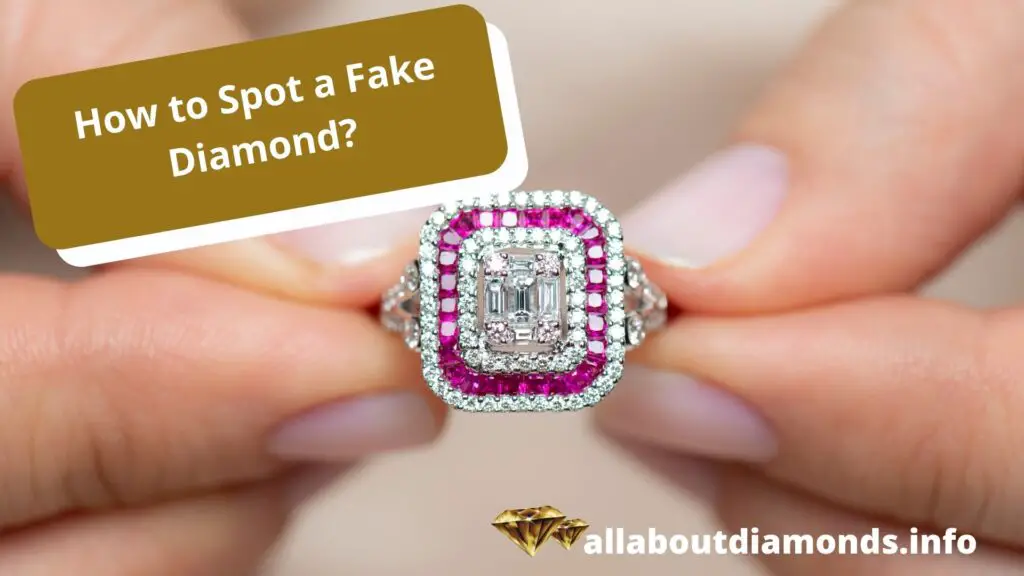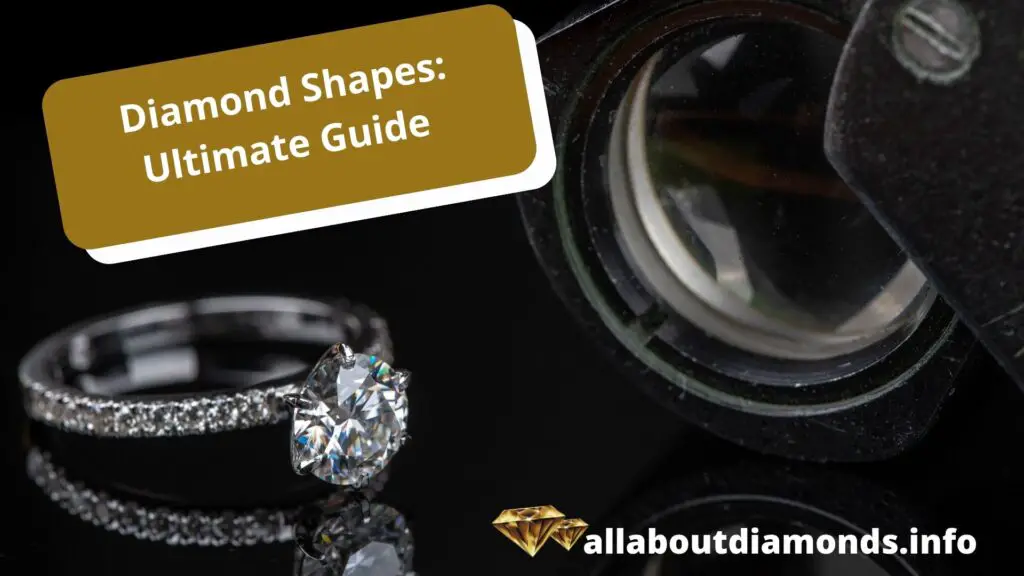Diamonds are one of the most sought-after and precious gems in the world. Unfortunately, it is also one of the most commonly counterfeited gems due to their high value. A counterfeit or fake diamond will not only cost you a lot of money but may also lose its value permanently over a period of time.
Therefore, it is important to ensure that you are able to recognize a real diamond from a fake one. In this article, we will look at how to spot a fake diamond, including the differences between diamonds and fake diamonds, and the tests that are used to determine if a diamond is real or not.
Diamonds vs Fake Diamonds

The first step before trying to spot a fake diamond is to understand the difference between real and fake diamonds. Diamonds are among the hardest substances on Earth, rated at 10 on the Mohs scale. This means that they are highly resistant to scratches and other physical damage. On the other hand, most fake diamonds are actually made from other materials such as cubic zirconia or white sapphire, which are much softer than diamonds and are therefore much easier to scratch and scuff.
Another major difference between diamonds and fake diamonds is their price. Real diamonds are rare and are usually expensive; whereas counterfeits are much cheaper and more widely available. Another giveaway is their colour; real diamonds are usually colourless or very pale yellow, while fake diamonds have a much whiter or even a blue or greenish tinge to them.
How to Spot a Fake Diamond?
Once you have established the difference between diamonds and fake diamonds, you can then look for the following features when trying to spot a fake diamond.
Thermal Test
The thermal test is one of the oldest and most widely used tests for determining if a diamond is real or fake. This test works by measuring how both real and fake diamonds respond to a change in temperature. Real diamonds are slow to conduct heat and take some time to heat up or cool down. On the other hand, fake diamonds have a much faster response time and will conduct heat much more quickly.
Facet Doubling
Facet doubling is a test that is used to determine if the facets on a diamond are real or fake. A diamond’s facets should be equal in size and shape and should not overlap or appear duplicated. Fake diamonds usually have facets that are not equal in size or shape and appear to be duplicated or overlap.
UV Fluorescence
The UV Fluorescence test measures the amount of light a diamond emits when exposed to Ultra Violet (UV) light. Real diamonds emit a blueish hue, while fake diamonds have a greenish or yellowish hue.
Newspaper/Dot Test
The Newspaper/Dot test is a simple and cost-effective way of determining if a diamond is real or not. The test involves placing a diamond on an opaque newspaper and seeing if any reflected light is visible. If the diamond is real, no light will be visible; however, if it is a fake, some light will be reflected off the diamond’s surface, creating a dot effect.
The Fog Test
The Fog Test is used to determine if a diamond has any imperfections on its surface. Real diamonds have an internal structure that makes them highly resistant to any fogging. However, fake diamonds are much less resistant and will often fog up when exposed to warm air.
The Water Test
The Water Test is a simple yet effective method of determining if a diamond is real or not. Real diamonds have a much higher density than fake diamonds and therefore will sink to the bottom of the water container. Fake diamonds, on the other hand, are lighter and will float on the surface of the water.
The Sparkle Test
The Sparkle Test is a commonly used test and probably the most reliable one. Real diamonds have a unique sparkle and will reflect light evenly and brilliantly. Fake diamonds, on the other hand, lack this unique sparkle and will usually appear dull or cloudy.
Knowing how to spot a fake diamond is an important skill for anyone dealing with diamonds, and it can help you avoid a lot of trouble and financial loss in the long run. The tests outlined above are among the simplest and most reliable methods of determining if a diamond is real or fake. As always, it is important to always take caution when buying diamonds and to make sure you get them from a reputable source.


